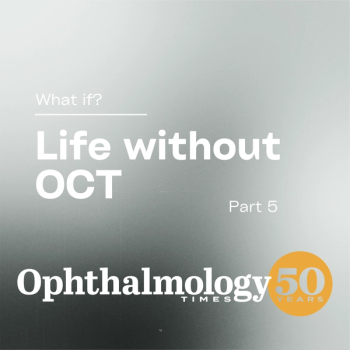
Lower oxygen levels reduce ROP in newborns
It was important to educate the nurses, respiratory therapists, and families that more oxygen was not necessarily better.
Orlando-A slight lowering of oxygenation parameters for very-low-birthweight infants and the specification of a target range were associated with a dramatic decrease in the incidence of severe retinopathy of prematurity (ROP), according to Deborah K. VanderVeen, MD.
While these findings are promising, a large scale, multicenter, randomized prospective trial is needed to clarify the relationship between oxygen and ROP and evaluate the risks and benefits of lower oxygen saturation parameters, said Dr. VanderVeen, a pediatric ophthalmologist and instructor in ophthalmology at Children's Hospital and Harvard Medical School, Boston.
Dr. VanderVeen presented a poster on the ROP study at the meeting of the American Academy of Pediatric Ophthalmology and Strabismus. The study was conducted in the neonatal intensive care unit (NICU) of Brigham and Women's Hospital, Boston.
Oxygenation levels for premature infants have been debated for several decades, and no one really knows how much oxygen they should receive in the first month of life, Dr. VanderVeen said. However, observational studies have suggested that slightly lower levels of oxygen could reduce the risk of ROP development without adversely affecting the infants' pulmonary or neurologic systems.
Neonatologists at Brigham and Women's Hospital decided to adjust the oxygenation parameters in the NICU, reaching a consensus that it would be safe to lower the alarm limits on monitors to 85% and 93% for all infants of birthweight 1,250 g and/or gestational age 28 weeks. The target saturation was 90% to 92%. Before that, the alarm limits were 87% to 97%, and there was no specified target range.
At 32 weeks gestational age, alarm limits were returned to the defaults of 87% and 97% without a specified target range.
To determine the impact of this adjustment, investigators reviewed the database prospectively kept for all infants screened for ROP, about 80 per year. Rates and severity of ROP over a 5-year period were compared, and the number of infants treated and their visual outcome were noted. Severe ROP was defined as any prethreshold or threshold ROP.
After the oxygenation policy change took effect on June 1, 2003, there was a 60% reduction in severe ROP (p = 0.03) compared with the previous 4-year period. There was also a trend toward a decrease in the incidence of any ROP. During the 1-year period following the change in oxygenation levels, fewer eyes were treated than in previous years, and no eyes were blind.
These findings are particularly important because the comparison was made within the same NICU, and no changes in limits had been made in clinical practice except the alarm adjustment, Dr. VanderVeen said.
She added that it was important to educate the nurses, respiratory therapists, and families that more oxygen was not necessarily better and to explain that a target range has been established to limit potentially harmful fluctuations in oxygen levels.
Surveys of NICU oxygenation policies have shown a wide range of saturation levels, Dr. VanderVeen said. Most attempt to target oxygen saturation between 90% and 95%; lower limits range from 75% to 90%, and upper limits vary from 90% to 98%.
A large, randomized, multicenter trial, the Pulse Oximetry Saturation Trial for Prevention of Retinopathy of Prematurity, is planned to address safety and efficacy questions surrounding oxygenation levels.
Although Dr. VanderVeen reported data from only 1 year following the change in oxygenation alarm parameters, the new limits are still in effect for the very-low-birthweight infants.
"Even though it was a small change, it appears to have made a huge difference in the rates of severe ROP, and it's statistically significant," she concluded.
Newsletter
Don’t miss out—get Ophthalmology Times updates on the latest clinical advancements and expert interviews, straight to your inbox.



















































.png)


